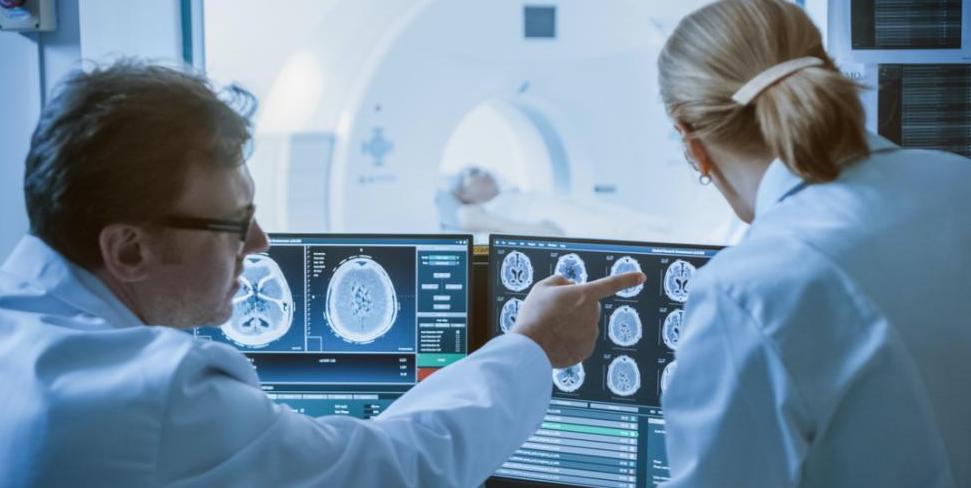2 Essentials to Improve Radiology Efficiency

Today’s technological advancements have proved to be significantly helpful in improving radiology workflows and efficiency. However, these advances have also generated colossal volumes and varieties of narrative documents that are necessary for understanding patients’ medical history, surgical pathology, and radiology results.
With the increased adoption of technological advances and the high velocity at which data is produced, the likelihood of information overload has increased significantly. (Information overload refers to a situation where medical practitioners are supplied with information that surpasses their processing capabilities.) Since decision-makers have limited cognitive processing abilities, information overload can lead to a decline in the quality of decisions made. Consequently, these can derail efforts to optimize radiological workflows and improve radiology efficiency.
Since tech-related information overload can be a challenge, chief radiologists should adopt solutions that help manage patient data. With such solutions, chief radiologists can improve radiology workflows and efficiency by enhancing access and interpretation of various patient records in their radiology businesses.
Here are two essentials that chief radiologists can adapt to improve workflows and radiology efficiency and minimize the likelihood of information overload.
Essentials to Improving Your Facility’s Workflow and Efficiency
1. Virtualize image acquisition with a centralized imaging solution
Virtualization of image acquisition via a centralized imaging solution can play a significant role in improving radiology workflows and efficiency and minimizing the likelihood of information overload.
More elaborately, using a solution that permits clinicians to collect non-DICOM images from various departments—including ophthalmology, wound care, dermatology, and ED—can be a game-changer in optimizing workflows. With such a solution, nurses and physicians can leverage Android, iOS, and Windows mobile devices to transfer images to a centralized archive without storing protected health information on a device. This helps streamline your radiology workflows, improving your facility’s efficiency.
For example, Novarad’s SnapView image capture app is supported by Novarad Enterprise Imaging. Integrating this solution into your radiology facility can simplify the acquisition of non-DICOM images from departments like ophthalmology, wound care, and dermatology. The solution also enables healthcare practitioners to use supported Android and iOS solutions. This helps solve challenges relating to HIPAA compliance and securing of protected health information (PHI). Cumulatively, these benefits help streamline workflows and improve radiology efficiency.
Working with a solution whose developers emphasized interface design and content is key to preventing tech-related information overload. With such a solution, your radiology facility can simplify the extraction of PHI and support the viewing of images from current and past stays as stored in a centralized archive. This helps prevent information overload by providing practitioners with well-organized medical records and support information. In turn, improvements in the quality of decisions made by radiology practitioners help streamline radiology workflows and improve radiology efficiency.
Novarad Enterprise Imaging is a great example because it highlights how technology can mitigate information overload, helping simplify workflows and boost efficiency. Specifically, Enterprise Imaging streamlines collaboration and supports fast and easy access to patient records via storyboards. With its easy-to-learn and user-friendly interface and 99.99% uptime, your practice can avert information overload by improving access to various records and leveraging the uninterrupted extraction of PHI. With the benefits of improved collaboration and Enterprise Imaging’s specialty viewers, your radiology staff will have ample information to make high-quality decisions, eliminating the adverse effects of information overload.
Ultimately, mitigating incidences of information overload helps eliminate workflow bottlenecks in your facility, helping improve radiology efficiency.
2. Track procedures, exam statuses, and patient info with a web-based platform
Real-time monitoring is an effective solution to process control in the radiology space. With the increased degree of standardization in radiology workflows via hospital information systems, picture archiving and communication systems, and radiology information systems, large volumes of data are generated, making process control necessary.
By leveraging web-based solutions, radiology practices can conduct real-time analysis of patient data, yielding unique benefits. Notably, the real-time analysis of procedures, exam statuses, and other patient information can help improve the coordination of workflows. It also helps practitioners and facilities track staff requirements, regardless of their increasing complexity. In time, these benefits will help improve radiology efficiency by averting the delayed turnaround of vital reports and process steps. Eventually, the benefits of real-time analysis help streamline workflows and boost radiology efficiency in your facility.
To achieve the aforementioned workflow-related benefits, radiology practices can adopt a web-based solution that highlights time-critical steps or processes. For instance, radiology practices can adopt Novarad’s Radiology Information System to leverage web-based scheduling, workflow tracking, and integrated business analytic capabilities. These features can help chief radiologists make appropriate decisions on vital procedures, exam statuses, and time-critical patient information. Eventually, these benefits can lead to streamlined workflows and improved radiology efficiency.
Regarding information overload, web-based solutions with integrated analytics can help identify gaps in patient records and causes of communication breakdown. Incomplete patient records and complex communication systems can introduce information overload. Preventing the phenomenon before it starts can be a great step toward eliminating workflow bottlenecks in your facility, which in turn, can improve your facility’s radiology efficiency.
Bottom Line
Improving your facility’s radiology efficiency helps promote the overall well-being of your practice. Virtualization of image acquisition with centralized PACS and adopting systems that support the real-time monitoring of your operations can be a game-changer. Moreover, these essentials can help eliminate tech-related information overload, streamline radiology workflows, and improve radiology efficiency.
Here at Novarad, we believe that the key to a successful imaging center is to work smarter, not harder, to deliver the type of care and outcomes that patients desire.
To see how we can help improve your workflows, feel free to reach out to our workflow specialists today!
%20(3).png?width=1555&height=462&name=Novarad%20EHS%20Logo%20Full%20Color%20(1)%20(3).png)
